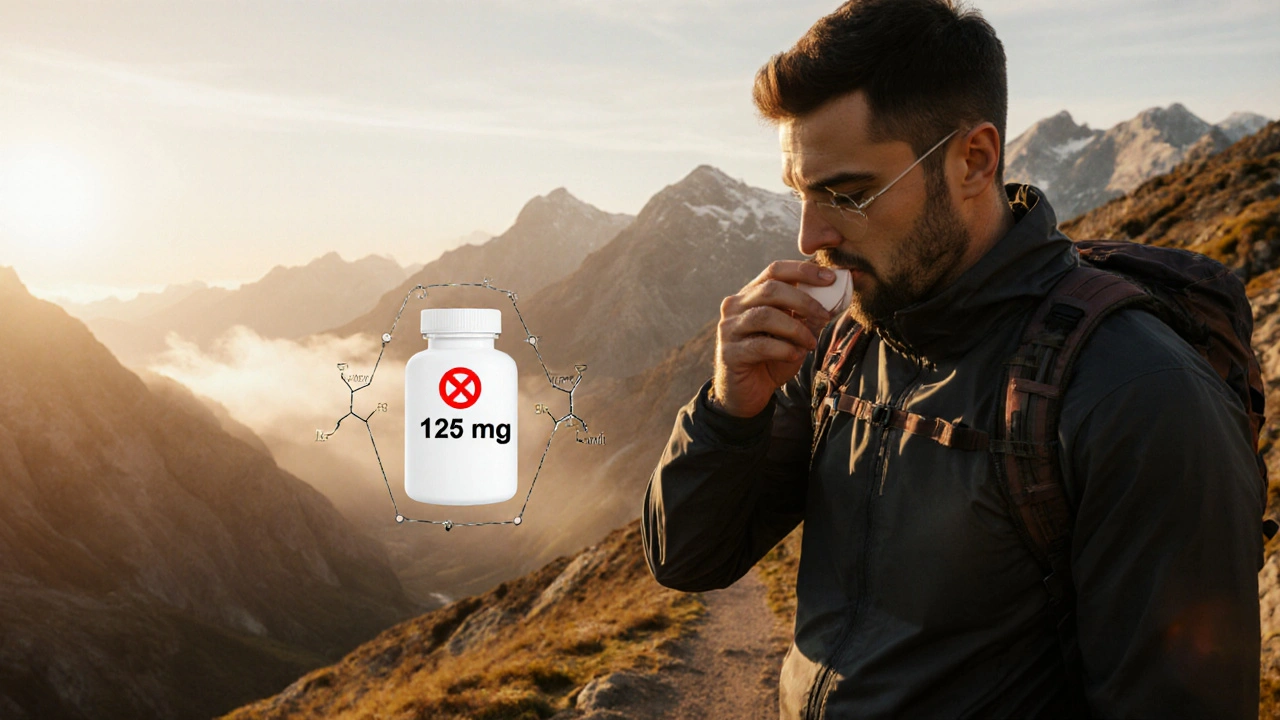Acetazolamide
When you hear about Acetazolamide, a carbonic anhydrase inhibitor sold under the brand name Diamox and used as a diuretic for conditions like glaucoma, altitude sickness, and certain seizure disorders. Also known as Diamox, it works by reducing the production of fluid in the eye and helping the body get rid of excess bicarbonate. This makes it a go‑to option for glaucoma, an eye disease where pressure builds up and can damage the optic nerve and for altitude sickness, a collection of symptoms that appear when you ascend to high elevations too fast. Below we’ll break down why doctors prescribe it, how it’s taken, and what to watch out for.
How Acetazolamide Works
Acetazolamide belongs to the class of carbonic anhydrase inhibitors, drugs that block the enzyme carbonic anhydrase, which helps control fluid balance and acid‑base levels in the body. By inhibiting this enzyme, the medication reduces the amount of aqueous humor the eye makes, which in turn lowers intra‑ocular pressure – a key step in managing glaucoma. The same enzyme block also leads to increased excretion of bicarbonate in urine, causing a mild metabolic acidosis that drives faster breathing. That respiratory boost helps people adjust to thin mountain air, easing headache, nausea, and dizziness linked to altitude sickness. For seizure control, the slight acid shift stabilizes neuronal activity, making Acetazolamide useful in some rare epilepsy types. In short, the drug’s triple action – eye‑pressure reduction, acid‑base tweaking, and fluid balance – links directly to the conditions it treats.
Practical use of Acetazolamide starts with the right dose. Adults with glaucoma typically take 250 mg to 500 mg two to four times a day, while climbers may use a single 125 mg to 250 mg dose before ascent. The pill form is most common, but an IV version exists for hospital settings. Monitoring is simple: watch for tingling in the fingers, a metallic taste, or frequent urination – all normal side effects of the bicarbonate loss. More serious warnings include severe allergic reactions in people with sulfa drug sensitivity, significant kidney impairment, or uncontrolled electrolyte imbalances. Staying hydrated and supplementing potassium can blunt many of the uncomfortable sensations. If you’re on other meds, tell your doctor because Acetazolamide can raise levels of certain antibiotics, steroids, and oral diabetes drugs.
Knowing the basics helps you decide if Acetazolamide fits your health plan. Whether you’re tackling high‑altitude trekking, managing eye pressure, or dealing with a seizure disorder, the drug offers a targeted approach that many broader‑spectrum diuretics don’t. In the list of articles below you’ll find deeper dives on buying generic versions safely, comparing it with other eye‑pressure drugs, and real‑world tips from patients who’ve used it on mountain climbs. Use this guide as a launchpad, then explore the detailed posts for dosage charts, cost‑saving advice, and step‑by‑step ordering instructions.
Diamox (Acetazolamide) vs Common Alternatives - Detailed Comparison
- Beata Staszkow
- |
- |
- 19
A detailed comparison of Diamox (acetazolamide) with top alternatives, covering uses, side effects, and how to pick the right medication.
View more
